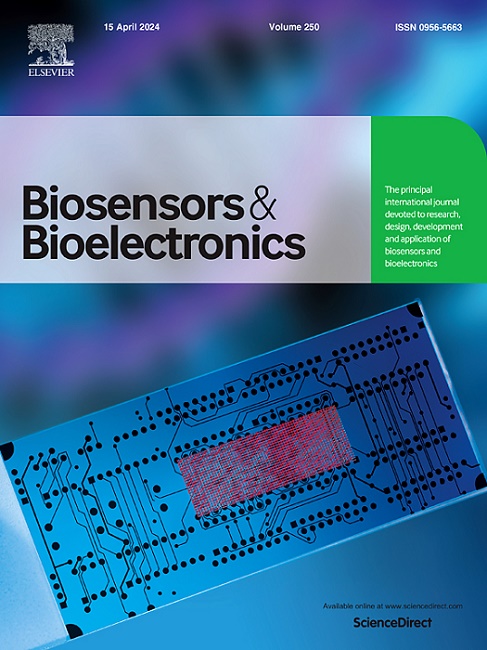Assessment of drug treatment response using primary human colon cancer cell spheroids cultivated in a microfluidic mixer chip
IF 10.7
1区 生物学
Q1 BIOPHYSICS
引用次数: 0
Abstract
Chemotherapy is one of the main therapeutic methods for tumor treatment. However, improving the accuracy of personalized medication for chemotherapy remains challenging. In this study, we developed a novel microfluidic chip that features herringbone protrusions and three-dimensional (3D) microcolumn holes created from microcolumn arrays. This design allows for precise control over the size and number of 3D tumor cell spheroids. As tumor cells aggregate into clusters within the chip, an integrated microfluidic mixer enhances liquid mixing and improves contact between the spheroids and the culture medium, promoting their growth. By combining this 3D spheroid approach with a concentration gradient mixer, we effectively conducted dynamic and high-throughput evaluations of anti-tumor drugs. The chip successfully identified varying sensitivities of tumor cells from different patients to these drugs, aligning with clinical observations from postoperative follow-ups. These features indicated that the tumor cell spheroid integrated microfluidic chip is effective for drug evaluation methodologies and holds promising implications for clinical applications.
利用微流体混合芯片培养的原代人类结肠癌球形细胞评估药物治疗反应。
化疗是治疗肿瘤的主要方法之一。然而,提高化疗个性化用药的准确性仍具有挑战性。在这项研究中,我们开发了一种新型微流控芯片,它具有人字形突起和由微柱阵列形成的三维(3D)微柱孔。这种设计可以精确控制三维肿瘤细胞球体的大小和数量。当肿瘤细胞在芯片内聚集成团时,集成的微流体混合器会加强液体混合,改善球体与培养基之间的接触,促进其生长。通过将这种三维球形方法与浓度梯度混合器相结合,我们有效地对抗肿瘤药物进行了动态和高通量评估。芯片成功识别了不同患者的肿瘤细胞对这些药物的不同敏感性,这与术后随访的临床观察结果一致。这些特点表明,肿瘤细胞球形集成微流控芯片是一种有效的药物评估方法,具有广阔的临床应用前景。
本文章由计算机程序翻译,如有差异,请以英文原文为准。
求助全文
约1分钟内获得全文
求助全文
来源期刊

Biosensors and Bioelectronics
工程技术-电化学
CiteScore
20.80
自引率
7.10%
发文量
1006
审稿时长
29 days
期刊介绍:
Biosensors & Bioelectronics, along with its open access companion journal Biosensors & Bioelectronics: X, is the leading international publication in the field of biosensors and bioelectronics. It covers research, design, development, and application of biosensors, which are analytical devices incorporating biological materials with physicochemical transducers. These devices, including sensors, DNA chips, electronic noses, and lab-on-a-chip, produce digital signals proportional to specific analytes. Examples include immunosensors and enzyme-based biosensors, applied in various fields such as medicine, environmental monitoring, and food industry. The journal also focuses on molecular and supramolecular structures for enhancing device performance.
 求助内容:
求助内容: 应助结果提醒方式:
应助结果提醒方式:


